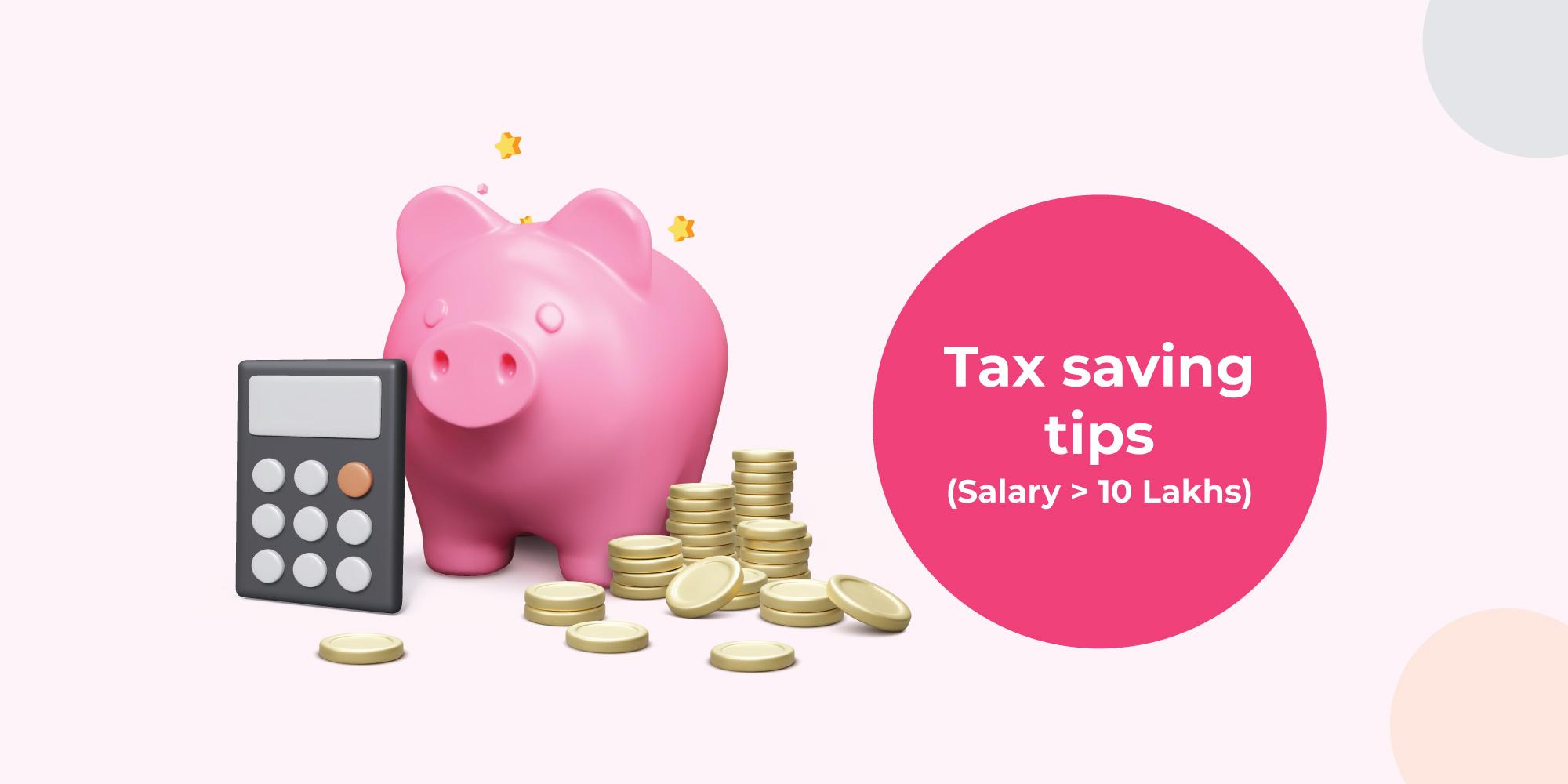Smart ways to save tax on a salary above ₹10 lakhs?
Reviewed by: Fibe Research Team
- Updated on: 16 Apr 2025
Reviewed by: Fibe Research Team

Are you wondering how to save tax on a ₹10 lakhs salary? This is a frequently asked question, and fortunately, you can discover the solution right here. The IT Department imposes taxes according to the relevant tax bracket.
While paying tax is the responsibility of every Indian, it is also common for taxpayers to benefit from the available deductions and exemptions and reduce the tax liability. During a financial year, salaried individuals can opt for either:
This way, you are allowed to claim exemptions or deductions based on the old regime or follow the new structure and forgo most of the exemptions. Points to note:
Read on to learn how to save tax on a ₹10 lakhs salary and more.
You must be well-informed of your salary structure before thinking about how to save tax on salary. If you are opting for the old regime, knowing this component forms a crucial part of the process. Simply put, your total salary minus the exemptions forms your taxable salary income.
The difference of this taxable income with deductions is your net taxable income. So, you can enjoy maximum tax benefits through these deductions and exemptions. Once you understand the salary structure, it becomes easier for you to compare both tax regimes to help you save tax.
Also Read: Best 10 Tax-saving Investments
If you are wondering how to save tax on salary using the old tax regime, you need to understand the salary component, as mentioned. A few exemptions you are allowed to claim from your salary income include:
You may also have generated other interest earnings from:
You need to factor these in apart from your salary income. To help you understand how to save tax on a ₹10 lakhs income, here is a hypothetical example.
| Details | Amount (₹) |
|---|---|
| Total salary | ₹10 lakhs |
| Deductions: | |
| HRA exemption | ₹2 lakhs |
| Standard deduction | ₹50,000 |
| Net income | ₹7.5 lakhs |
| Additions: | |
| Interest earnings from investments | ₹10,000 |
| Gross taxable income | ₹7.6 lakhs |
Disclaimer: Aforementioned values are arbitrary and have been used for illustration purposes only.
In case you have availed of a home loan, you can claim the interest of up to ₹2 lakhs under the income from the house property head u/s 24 of the IT Act.
From the gross taxable income, you need to claim certain deductions to arrive at the net taxable income. Here’s a simple example:
| Details | Amount (₹) |
|---|---|
| Gross taxable income | ₹7.6 lakhs |
| Deductions: | |
| Section 80C | ₹1.5 lakhs |
| Section 80D | ₹50,000 |
| Section 80CCD (1b) | ₹50,000 |
| Section 80TTA | ₹10,000 |
| Net taxable income | ₹5 lakhs |
| Income tax payable | ₹12,500 |
| Reduce rebate under Section 87A | ₹12,500 |
| Cess on the income tax amount | 0 |
| Final tax amount | 0 |
Disclaimer: Aforementioned values are arbitrary and have been used for illustration purposes only.
Get Instant Cash Loan In 5 Min
If you choose the new tax regime, you are not eligible to claim certain deductions. In this case, you can calculate the total tax payable on your total gross taxable income.
As per the new tax regime, you can claim a new deduction as per Section 80CCD (2).
As there are no common deductions, such as HRA and LTA, your total gross taxable income becomes higher according to the new structure. This ultimately results in a higher tax outgo.
Here is an example to help you understand the new regime:
| Details | Amount (₹) |
|---|---|
| Gross taxable income | ₹10 lakhs |
| Deductions: | |
| HRA exemption | 0 |
| Standard deduction | 0 |
| Professional tax | 0 |
| Standard deduction | ₹50,000 |
| Net taxable income | ₹9.5 lakhs |
| Final tax amount | ₹54,600 |
Disclaimer: Aforementioned values are arbitrary and have been used for illustration purposes only.
Check out the available exemptions from salary:
| Element | Tax Rules |
|---|---|
| Basic Salary | Completely taxable |
| Dearness Allowance | Completely taxable |
| HRA or House Rent Allowance | Tax Exemption up to a limit |
| LTA or Leave Travel Allowance | Exemption of costs of travel tickets for 2 trips in 4 years u/s 10(5) |
| Mobile/Internet Allowance | Exemption in case of primary utilisation for office purposes after submitting bills or proof |
| Education Allowance for Children | ₹4800 per child with a cap of 2 children |
| Food Allowance | ₹50 per meal with a cap of 2 meals per day |
| Standard Deductions | ₹50,000 without any restrictions |
| Professional Tax | ₹2,400 (varies from state to state) |
You can enjoy tax benefits when you use a personal loan amount for specific reasons such as:
If you are planning to opt for a Personal Loan, you can do so easily on Fibe. Download our Instant Loan App and avail a maximum loan amount of up to ₹5 lakhs. You can get the required funds within minutes after approval at competitive interest rates.
You can avoid tax by:
The tax amount depends on:
You can pay zero tax if you opt for the older tax regime, provided you claim the deductions and exemptions accurately.
You can reduce tax on your income by investing in Section 80C applicable products, like:
Under the new tax regime, there is no tax levied for income up to ₹3 lakhs in FY 24-25.